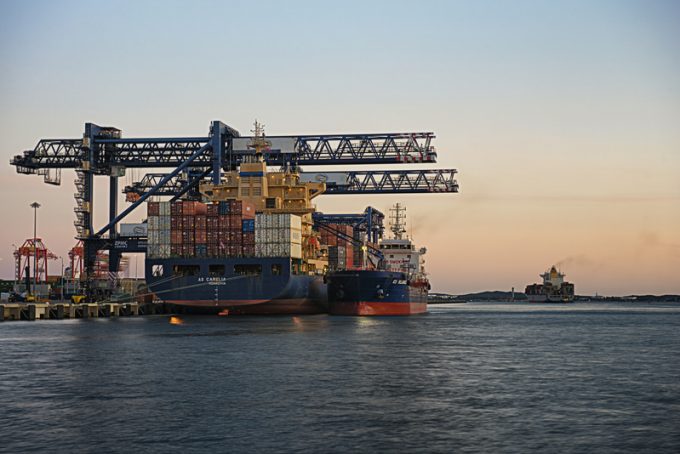Capture of MSC Aries will further drive up Indian export costs
With heightened geopolitical tensions sparked by the Iran-Israel faceoff, Indian exporters are again staring at ...

The prolonged disruption to container supply chains has left Australian businesses increasingly vulnerable, according to the Australian Competition and Consumer Commission (ACCC).
Today, the ACCC released its annual container stevedore monitoring report, which found delayed shipments and rapidly rising freight rates were putting “intense pressure” on exporters and importers.
The commission said: “A number of Australian exporters are struggling to meet their contractual obligations, and some large retailers are so concerned that their cargo will not arrive before Christmas that they are buying their own shipping containers and chartering their own vessels.”
The ACCC noted that one stevedore saw just 10% of vessels arriving in their designated berth windows during the financial year 2020-21, the lowest rate on record.
Furthermore, ACCC said, freight rates on key global trade routes were currently around seven times higher than a year ago.
ACCC chair Rod Sims said: “The margins of Australian importers and exporters are being squeezed, as they are all around the world, and the current situation is very challenging for businesses that rely on container freight.”
Indeed, it seems the ACCC has fresh reel of red tape ready to wrap around the country’s terminal operators, claiming regulation of the industry was “not fit for purpose”.
The ACCC is particularly concerned with port productivity, and the report highlights how, even before the pandemic disruption, Australian container ports were “relatively inefficient and well below international best practice”.
Using UNCTAD data for 2019, it said: “The median in-port time for containerships visiting Australia was three times longer than in Japan, twice as long as China and 50% longer than Singapore or New Zealand.”
The ACCC also noted the impact industrial action by the Maritime Union of Australia has had on port productivity, with average idle hours at Port Botany – the -time a ship spends in berth – increasing from 11.9 hours pre-pandemic to 21.2 hours in 2020-21.
Mr Sims added: “Industrial action on top of pre-existing congestion has unfortunately put enormous strain on our international container ports at a time when they can least cope with it. And, in the case of Port Botany, some shipping lines have decided the delays made using the port commercially unviable.”
As well as on the problems on the waterfront, there has been growing unrest from landside operators over escalating terminal access fees levied by stevedores to recoup infrastructure investments. And the ACCC noted that stevedores had been earning less from shipping lines and relying more on revenue from charges levied on transport operators.
However, in a potential blow to the transport firms paying the fees, Mr Sims said: ”At the current level of landside charges, stevedores do not appear to be earning excessive returns; but we will continue to keep a close eye on these charges.”
Paul Zalai, director of the Freight & Trade Alliance, said: “Stevedores and empty container parks are reducing fees to shipping lines and holding transport companies to ransom to pay terminal access charges.”
He called for “some form of regulation” to force stevedores and empty container parks to negotiate rates direct with shipping lines, adding: “No further regulation on pricing would be required, as shipping lines could recover this cost in commercial dealings with contracted importers, exporters and freight forwarders.”
Comment on this article